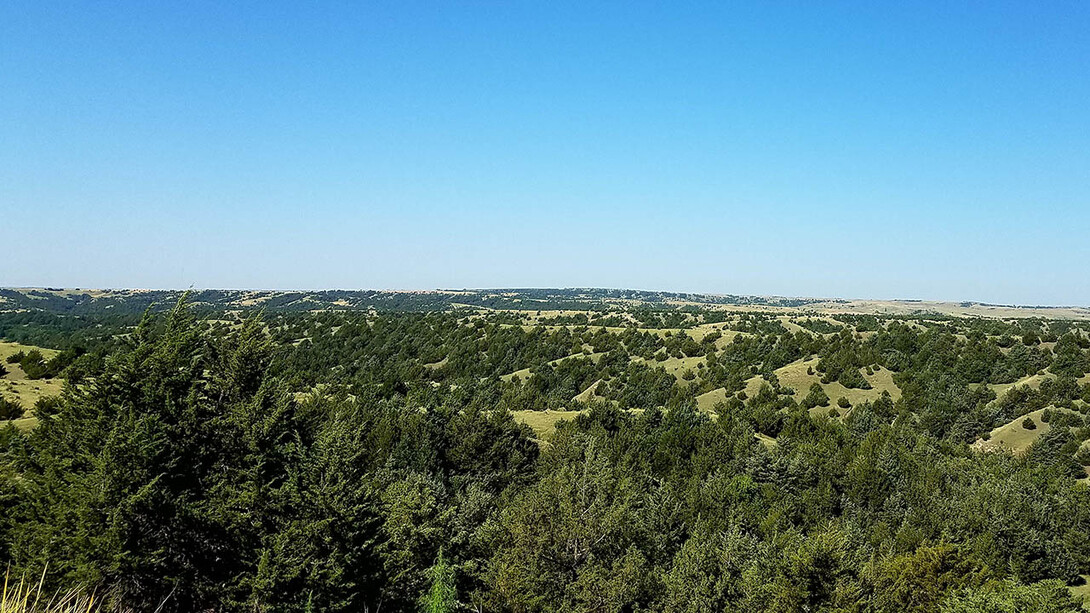
A University of Nebraska–Lincoln project to improve efforts against redcedar invasions has received a $79,310 grant from the Nebraska Environmental Trust.
Recent partnerships among scientists, agencies and landowner coalitions have resulted in a growing interest for a statewide plan to the woody encroachment problem. A sense of urgency has led to calls for coordination of a statewide planning initiative that strategically protects the last remaining large intact grassland region in the central Great Plains and halts the continued expansion of woody encroachment at scales necessary for sustaining grassland wildlife.

The funding will support a coordinator to lead the development of a statewide plan that builds resilience in grassland landscapes and improves the performance of conservation expenditures targeting eastern redcedar invasions. The coordinator will build upon the combined efforts of the Nebraska Game and Parks Commission and the university, which have resulted in increased awareness of the scope of this problem; its implications for the profitability, productivity and diversity of working lands in the state; and new ways to strategically target and manage eastern redcedar invasions.
“As a result, we are poised to produce — across a statewide network of private and public partners — the first statewide management plan on eastern redcedar that recognizes regional trends and challenges while catering to local management contexts,” said Dirac Twidwell, associate professor of agronomy and horticulture and project lead.
This year’s grant is a second-year award, with potential third-year funding of $81,690.
The Nebraska Legislature created the NET in 1992. Using revenue from the Nebraska Lottery, the trust has provided more than $349 million in grants to more than 2,400 projects across the state. Anyone — citizens, organizations, communities, farmers and businesses — can apply for funding to protect habitat, improve water quality and establish recycling programs in Nebraska. The NET works to preserve, protect and restore the state’s natural resources for future generations.







